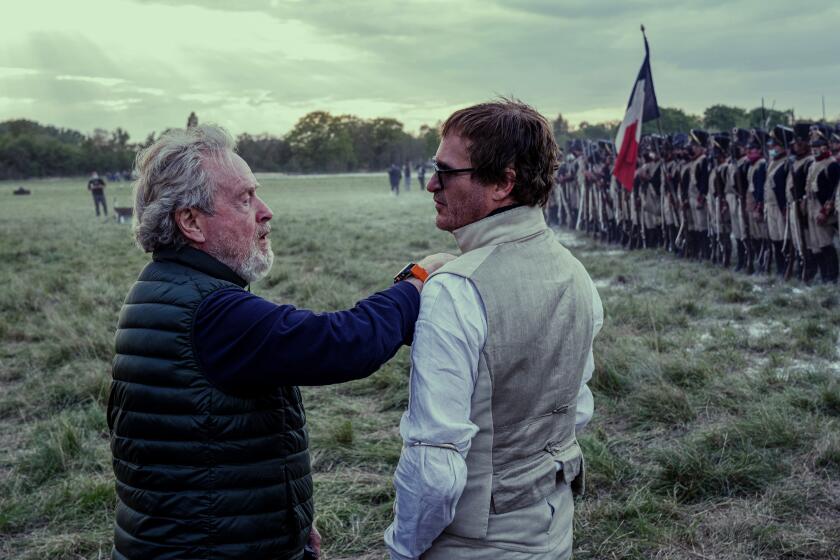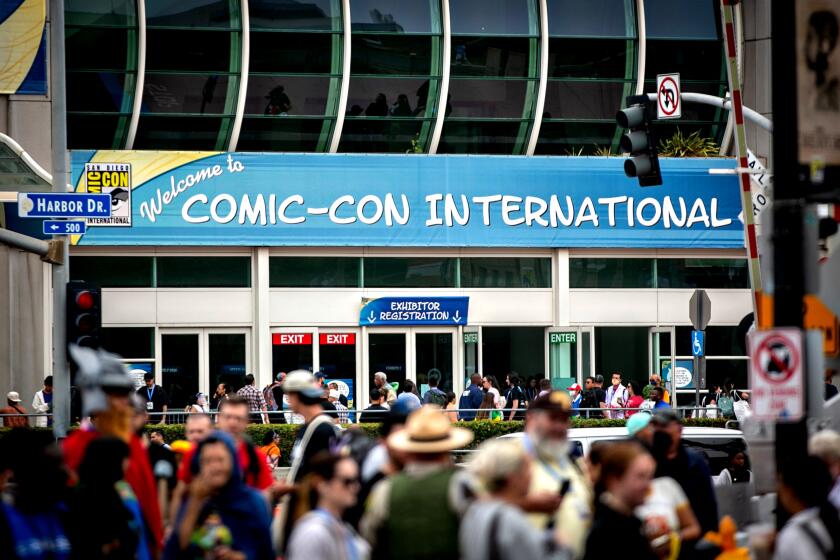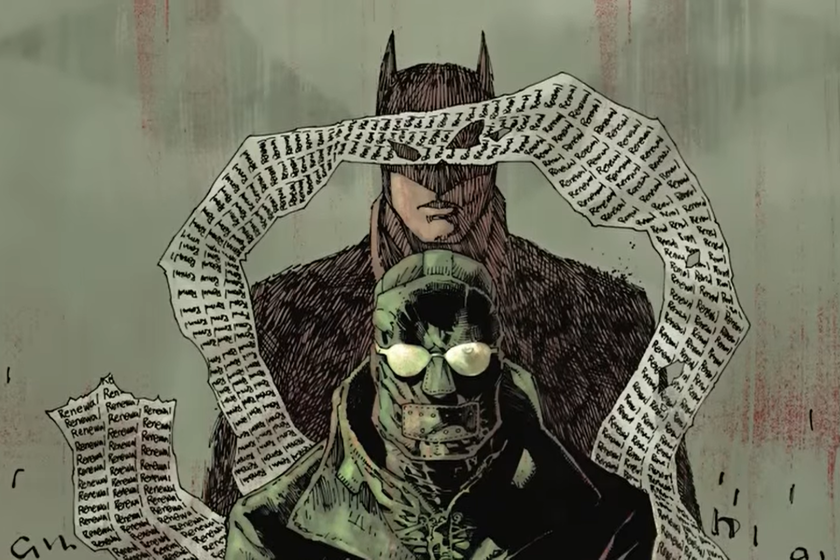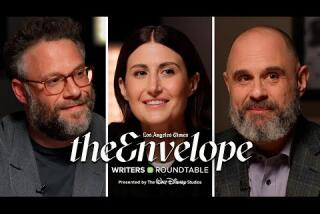Ridley Scott’s ‘Modville’ graphic novel debuts during a tough time for comics. Can it survive?

- Share via
- Director Ridley Scott wades into graphic novels alongside Jesse Negron to introduce “Modville.”
- It’s difficult to launch a new comic outside of the Big 2 (Marvel and DC), but they hope to do it with an unconventional approach.
When Ridley Scott, visionary director of “Alien,” “Blade Runner” and “Gladiator,” connects with your story, it’s probably a good idea to explore it in any medium possible.
“Modville,” a four-issue neo-noir graphic novel set in New Orleans in 2169 that unfolds in a world of crime and artificial humans (known as mods), was just that story. Created by Jesse Negron, co-written by Joe Matsumoto and with art by Hendry Prasetya and Eko Puteh, the comic touches on themes of father-daughter relationships, morality and humanity. The comic series bucks the current trend of reframing superhero narratives. Instead, it’s an original idea that will go directly to consumers (versus being released by a big publisher like Diamond and Penguin Random House) and initially be printed in a prestige format (a 200-page hardcover instead of single issues). It’ll also have an idiosyncratic schedule, free of month-to-month pressures.
Negron, who had previously worked with the director and his late brother, Tony Scott, pitched the seemingly radical idea of doing a comic book to Tom Moran, senior vice president of Ridley Scott’s film and TV company Scott Free Productions.
“Tony was a big fan of Jesse’s. We met and talked about his ideas, and I said, ‘Well, what do you want to do? Film or TV?’ He said, ‘I really want to do comics, but you guys don’t do that.’ I said, ‘Why not?’” said Moran. “As an entertainment company, especially these days, you have to evolve. We have to reach out and expand to new forms of entertainment. Honestly, Ridley was probably like, ‘We should have done this a long time ago.’ He’s such a good artist himself.”
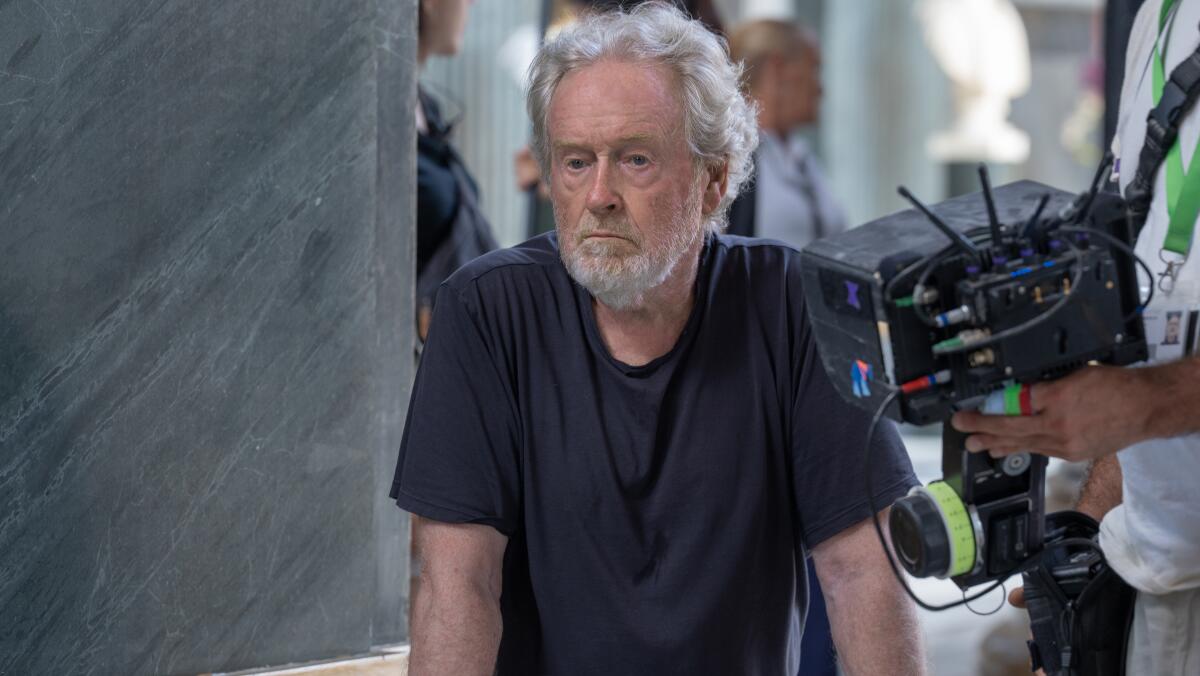
“Collaborating with Jesse Negron and Mechanical Cake on graphic novels feels like a natural evolution for myself and Scott Free,” said Ridley Scott via email.
Through his company Mechanical Cake, Negron will be introducing the graphic novel, as well as a “Modville”-style booth, at WonderCon in Anaheim this weekend. Negron, Moran, publisher and editor Dave Elliott, and Anthony Francisco, a senior visual development artist for Marvel Studios, will discuss the ins and outs of the company in a panel Saturday.
At a time when there’s greater sensitivity around elevating stories about women, the director has long focused on intelligent, nuanced female characters.
Launching ‘Modville’
Negron has been working on the idea for “Modville” for at least 5 years. Negron and Chief Financial Officer Tom Sanders launched Mechanical Cake in 2015 to not only create comics but to also cultivate new ideas in multimedia.
“Mechanical Cake is a world-building [intellectual property] creation team that is focused in the sci-fi-fantasy-action-adventure genre,” said Sanders. “The goal of any creative is not only to tell the story but to get it to the world and get the fans involved.”
The company’s association with Scott already adds cachet to the title, but obtaining his blessing was only the first step.
“There’s no doubt that for me to launch at the bar of Ridley Scott, it’s a lot of pressure to be honest,” said Negron. “It’s sometimes very difficult to work at the level he works at because he’ll just go, ‘Meh, I don’t know.’ To work at his level where he goes, ‘Whoa, you guys keep doing this. Whoa, you did that!?’ That was really important to me.”

Getting on the same page as your business partners is only one of the hurdles to overcome when launching an independent comic book. With the sale of Diamond Comic Distributors to Alliance Entertainment, the comics industry may breathe a sigh of relief, but market leaders still tend to dominate attention and shelf space, limiting sales for small presses and direct-to-market players. Diamond helped unknown titles get the word out through its Previews catalog, but with its bankruptcy and subsequent sale, it’s unclear how the acquisition will affect the comics industry.
Of the 40 most popular graphic novels in 2024 (based on units sold), only four titles weren’t published by the leading comics companies — which include Marvel Comics, DC Comics, Image Comics, IDW Publishing, Dark Horse Comics and BOOM! Studios. Those titles include “Dog Man: The Scarlet Shedder” by Graphix, “Uzumaki” and “Chainsaw Man, Vol. 1” — both by VIZ Media — and “Jimi Hendrix: Purple Haze” by Titan Comics. This trend is seen with periodical comic books too, with only four franchises outside of Marvel and DC able to crack the top 50 comics of 2024. Those all happened to be well-known ’80s titles such as Image’s G.I. Joe and Transformers, IDW’s Teenage Mutant Ninja Turtles and Dynamite Entertainment’s Thundercats.
But it’s an uncertain time for all entertainment sectors. Like the movie industry, comic book sales and consumer trends indicate that introducing an original story, without an established distribution network, like the one Diamond provided for decades, is a daunting and risky task.
As Comic-Con takes center stage, one writer reminds us that comic books are still the heart and soul of the pop culture celebration.
Film and comics have a lot in common, which is also why the union of Scott Free Productions and Mechanical Cake makes sense to the parties involved.
“They deliver like nobody else on the planet in this genre. Science fiction, action, the edge of fantasy. I can’t think of a better partner to team up with than Scott Free,” said Sanders. “Doing a comic book is like doing a film or TV show but with more details. Everything on the panel is intentionally put there, just like you do in a film or TV show. If you’ve done it right, you pretty much have laid out a storyboard that anyone should be able to follow. We want to build a world for others to create stories in as well.”
Scott, known for his detailed storyboards, was also drawn to the comics because of his background as an artist.
“To watch Ridley draw is amazing. He’s such a visionary, from mind to pen to hand to paper. You can flip through his storyboards and see the whole movie. It’s truly an art form, and that’s essentially what you’re getting from comics,” said Moran.
Bill Sienkiewicz is one of the prominent artists who will help create the visual language for “Modville,” specifically in crafting covers for the series. Sienkiewicz said he enjoys the “grunge” technology in the story, which harks back to something familiar.

“What I’m enjoying about ‘Modville’ is that, while it may not be a direct corollary to ‘Blade Runner,’ it has enough of the DNA to make it feel like it’s at least adjacent. I love the idea of investigating on deeper levels what constitutes humanity and morality,” said Sienkiewicz. “When you’re doing a monthly book, you can afford to be a little more subtextual and be intriguing for it’s own sake.”
Publishing path
”Modville” has also carved out its own route into a crowded marketplace. It’ll launch with a prestige format (200-page books) and hardcovers, then transition to soft covers and to a wider market. Unlike traditional comics and graphic novels, these editions won’t be reprinted, making them one-of-a-kind commodities. Elliott said he wants Mechanical Cake to be accessible to the public but also to make sure the creative process isn’t rushed to meet market demands.

“More books are being published by Kickstarter at the moment than almost anybody else. So that model of working directly with the people who are fans of what you’re doing is something that is so important today,” said Elliott.
“But a lot of other publishers you look at, they’re trapped into that, ‘It’s a new month. We have to have something out every month.’ I’m like, ‘No, we don’t.’ We put something out when it’s ready but not before. I wanted us to treat the publishing the way the Europeans do with graphic novels and the way the publishing world used to treat novels.”
It’s a mind-set that goes against what retailers and consumers may be used to. Paul Grimshaw, owner of Burbank’s House of Secrets comic book store, prefers serialized comic books and graphic novels that “come out on a monthly basis and keep people interested,” but he says being unique is also key. One of his top-selling comics over the past year has been “Saga,” an epic space opera/fantasy series written by Brian K. Vaughan from Image.
“Honestly, all you need to do is be good. If you’ve got well-written, well-illustrated books, they will find an audience. Gimmicks are gimmicks. Gimmicks only last for a short amount of time. My favorite books are the ones that have good artists and are telling a solid story,” Grimshaw said.
Paul Dano portrayed the Riddler in the 2022 movie ‘The Batman,’ then examined the character’s origin story in a comic book series.
Ridley Scott’s influence
Besides lending his name to the project, Scott also contributed to shaping the story and brought a critical eye to the art direction. It dawned on Elliott early on that Scott could see the relationship colors played to viewers onscreen and to readers on paper.
“In the beginning, the colors were a bit brighter and more vivid. And [Scott would say], ‘Maybe you can mute it a bit, desaturate it a bit.’ This was when I realized that he understood the difference between comics and film. We were talking about the fact that comics use color in a way [Scott] can’t use in film. It is a more muted palette so you can trigger emotion [differently],” said Elliott.
“I started out as an artist, sketching every storyboard for each of my films, and it’s remarkable how instinctively the visual language of storytelling in ‘Modville’ unfolds,” said Scott.

Scott and Negron’s sensibilities seem to align well. Negron’s stylistic and storytelling influences are varied: from the retro technology and stylish imagery of “The Rocketeer” to a Southern Gothic aesthetic born of a Baptist upbringing.
When Negron sent Scott his first draft of “Modville,” the director made him dial back some of the more controversial and gratuitous elements. Though he had been working on the story and art for years, Negron realized that Scott wasn’t trying to change his vision, he was making sure that it would grab readers and keep them coming back.
“He goes, ‘I’ve had a room of 6,000 people turn against me.’ So we toned it down a little bit in the opening [for ‘Modville’], and I think it was a good choice.”
More to Read
The biggest entertainment stories
Get our big stories about Hollywood, film, television, music, arts, culture and more right in your inbox as soon as they publish.
You may occasionally receive promotional content from the Los Angeles Times.

